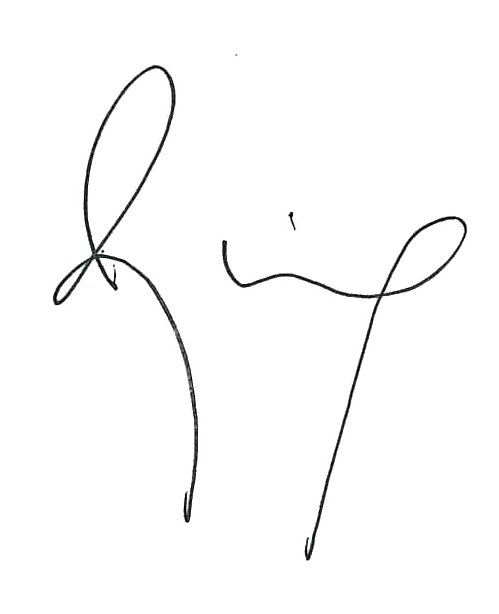Academic Projects



























BIFURCATION FROM COMPUTATION TO COMPOSITION : Re-Imagining Camp Nou
BIFURCATION FROM COMPUTATION TO COMPOSITION, is a project of IAAC, Institute for Advanced Architecture of Catalonia developed in the Master in Advanced Architecture 2019/20
by Students: Ahmad Albaalbaky, Teddy Fadous, Léa Garguet-Duport, Stefana Zapuc
and Faculty: Mark Burry, Rodrigo Aguirre, Ashkan Foroughi and Ivan Marchuk


























DIVERGENCE
Divergence is a project of IaaC, Institute for Advanced Architecture of Catalonia developed at Master in Advanced Architecture, in 2018/2019
by Students: Tarek Elkassouf, Filippo Testa, Oana Taut, Apoorva Soni, Vien Nguyen, Nicolas Saade, Eszter Olah
Faculty: Professor Mark Burry and Rodrigo Aguirre
Support: Lana Awad, Nikoleta Mougkasi, Soroush Garivani, Arman Najari, Lars Erik Elseth














DELTA Z
The research sets to challenge the superficiality of a geometric system by giving it depth, addressing its structure capacity and to deploy potentials of inhabitation. Rather than a canopy, a pavilion or a building, the experiment is simply an attempt to construct space, remote from any architectural typology; it can be defined as one of the many inhabitable material expressions resulting in the “three-dimensionalization” and parameterisation of a mathematical system of grids.
School: Contemporary Association of Architects, Tehran
Date: Jan 2017
Location: Tehran, Iran
Director: Edouard Cabay, Rodrigo Aguirre and Ramtin Taherian
Students: Armin Badian, Bahar Bagheri, Negar Bisadi, Soroush Garivani, Reza Hesami Sarvenaz Hosseini, Aida Jahanshiri, Amir Javdan, Marjan Khaleghi, MohammadReza Mahjuri, Arman Najjari, Ghazal Rafalian, Nematollah Safari, Sarvin Sarabi, Oveis Shahnaee, Mandana Tanbakouei, Amirali Zinati and Paniz Farrokhsiar.
Photography: Deed Studio.

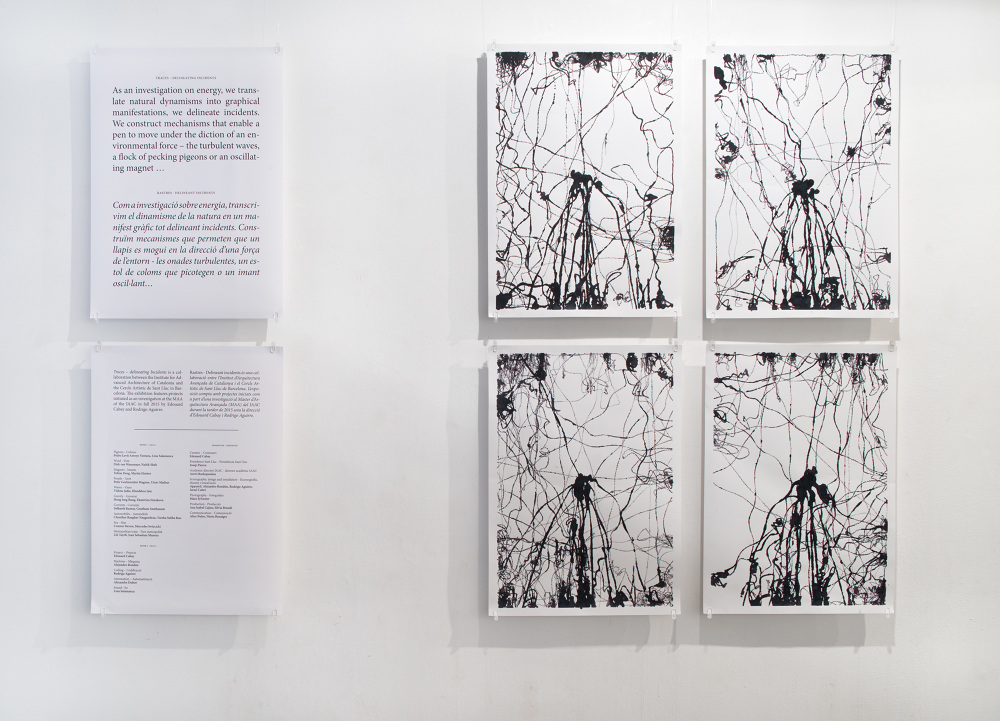

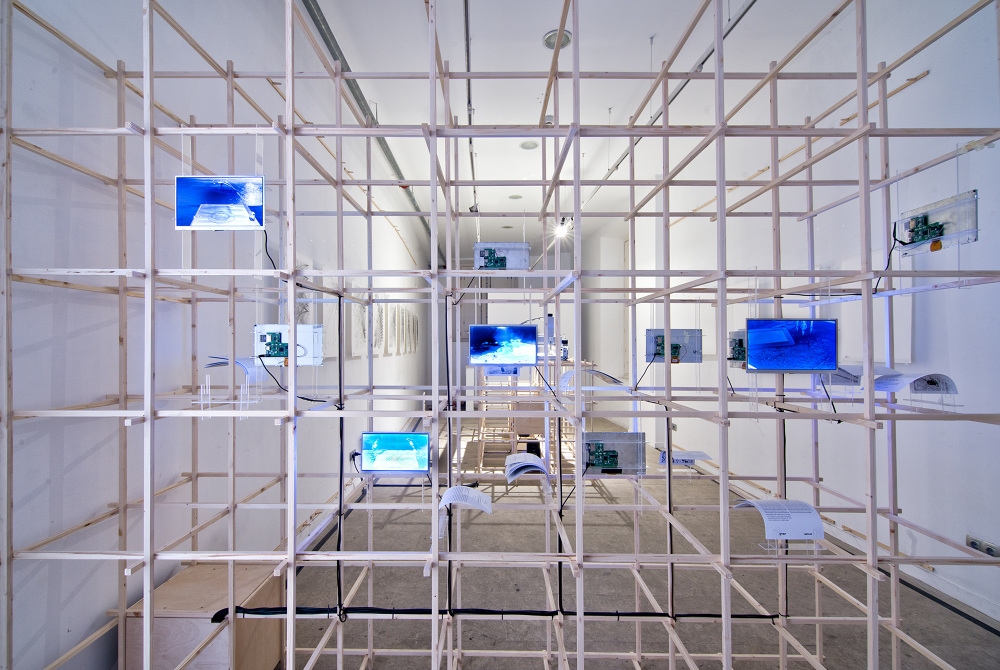


TRACES
Traces – delineating Incidents is a collaboration between the Institute for Advanced Architecture of Catalonia and the Cercle Artístic de Sant Lluc in Barcelona. The exhibition features projects initiated as an investigation at the MAA of the IAAC in fall 2015 by Edouard Cabay and Rodrigo Aguirre.
Date: May 2016
Use: Exhibition
Gallery: Cercle Artistic Sant Lluc in Barcelona
Team: Edouard Cabay, Rodrigo Aguirre and Alejandro Rondón
With: Institute for Advanced Architecture of Catalonia
Students:
Pedro Levit Arroyo Ventura, Dirk van Wassenaer, Tobias Deeg, Peter Geelmuyden Magnus , Martin Hristov, Vishnu Jadia, Khushboo Jain, Hong Jeng Rung, Sidharth Kumar, Utsav Mathur, Jean Sebastian Munera, Chenthur Raaghav Naagendran, Lina Salamanca, Naitik Shah , Goutham Santhanam, Ekaterina Simakova
Photography: Enric Bolaño
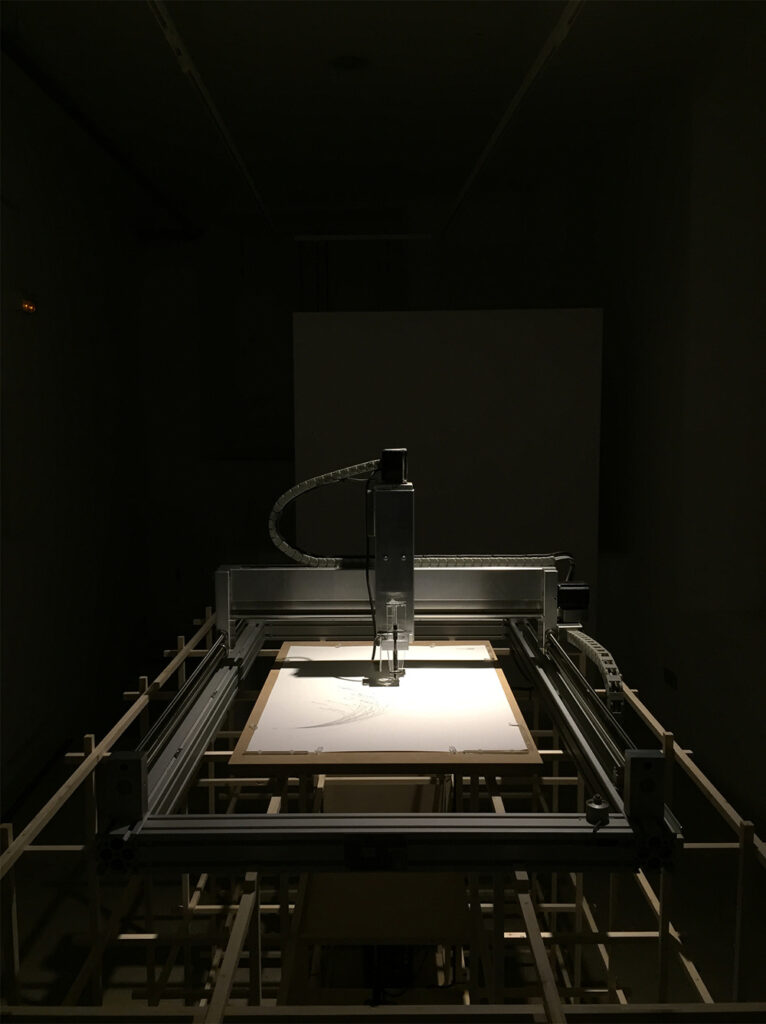

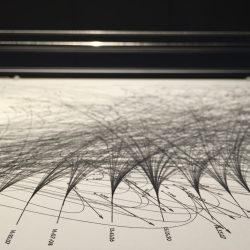


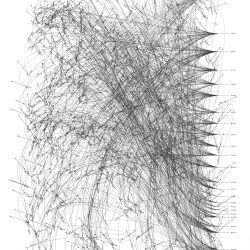
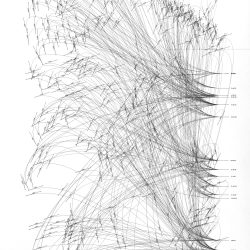
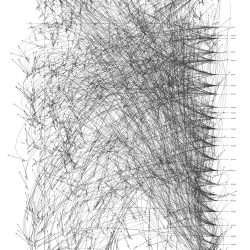
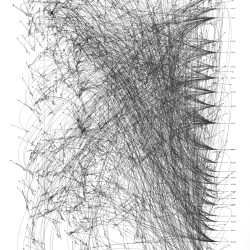







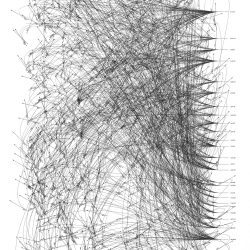

314 MOMENTS
Once every minute, a camera takes an aerial picture of the public space in front of Barcelona’s cathedral. A simple algorithm converts the photograph into a vectorial register of the position of the people on the square. And that information is fed to a 3-axis robot equipped with a pen that simply draws it on a 50 cm by 70 cm paper canvas. A person is represented by a dot, labelled with a number and a short line going in the direction of the orientation of the sun at the moment at which the picture was taken. After completing the drawing of a photograph, the system finds the last picture taken and undertakes the drawing of a new set of lines on the same canvas. It repeats the action form 10 am to 8 pm, overlapping the lines of hundreds of photographs, of thousands of people. Every day a drawing gets started on a fresh white page.











SCRIPTS
A rotating arm in the middle of a white page holds a pen on an expandable rod, whose rotatory movement is provoked by an electronic board that controls both the speed of revolution and the distance between the pen and the centre of the device. The pen’s circular trajectory creates thin lines of ink as a deformed circle; over time, as many circles overlap, varying densities of ink appear on the page, showing the possible paths that the anatomy of the machine permits.
Scripts is an experiment in which physical parts compose mechanisms that compels a movement of a pen on a paper canvas. The drawing machines are fuelled by low voltage electricity, and their movements are controlled by electronically induced impulses. This enables them to potentially connect to the outside world, able to receive information numerically, sensed from the city, to convert data into drawings.
Scripts – a chronicle of incidents is a collaboration between the Institute for Advanced Architecture of Catalonia and the Casa elizalde in Barcelona. The exhibition featured projects initiated as an investigation at the MAA of the IAAC in fall 2015 by Edouard Cabay and Rodrigo Aguirre.
Team: Edouard Cabay, Rodrigo Aguirre
With: Institute for Advanced Architecture of Catalonia
Students: Valerie Frey, Mehmet Berk Bostanci, Gelder Van Limburg Stirum, Pablo Agustin Vivas, Hsin Li and JengRung Hong, based on original work by Nasser Ghannam, Mohamad Rachid Jalloul, Ceren Yildrim and, Guolang Zhang, Cagan Izgi, Athanasios Zervos, Keesje Avis, Kathleen Bainbridge, Irene Ayala Castro, Yasmina Wery, Krati Gorani
Photography: José Hevia and Xavier González
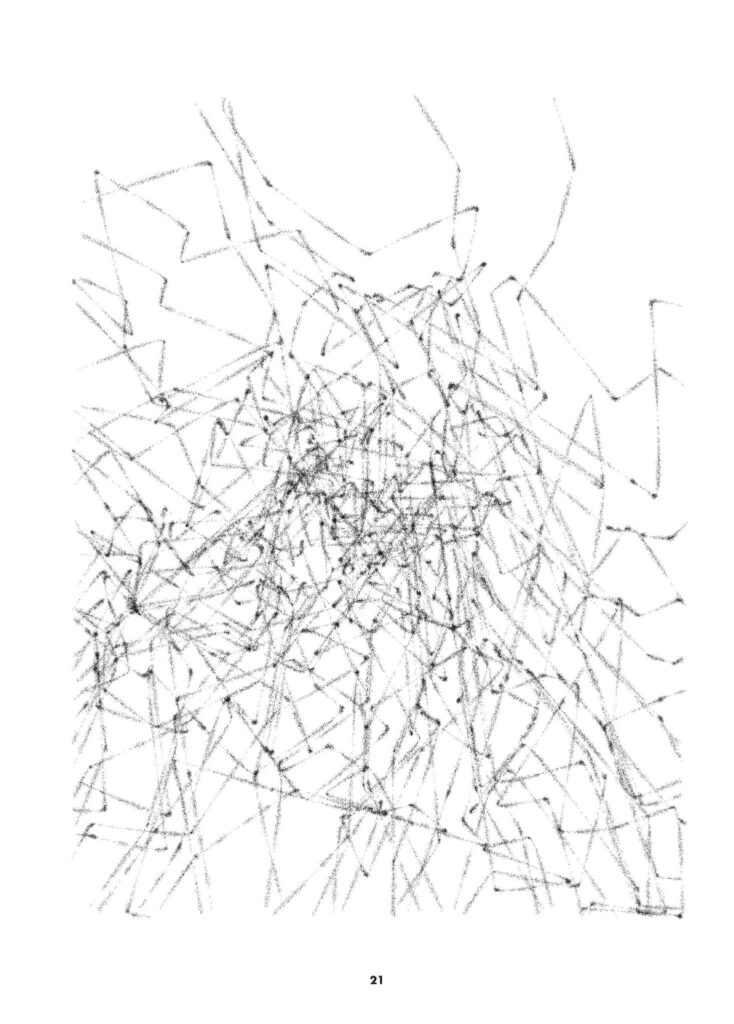
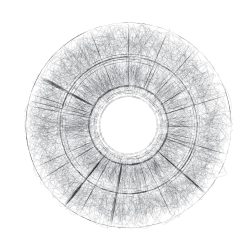



LOGICS
by Rodrigo Aguirre
Drawing is traditionally seen as the act of creating an image through a relational means between the artist and the medium. In today’s digital era, the artist is subjective to human or machinic protocols. If the act of drawing is unique to humans, what does it mean to automate the procedure of drawing? Does it take away a certain unpredictable quality? The human touch, as they call it. Or can a machine portray its own sense of unpredictability?
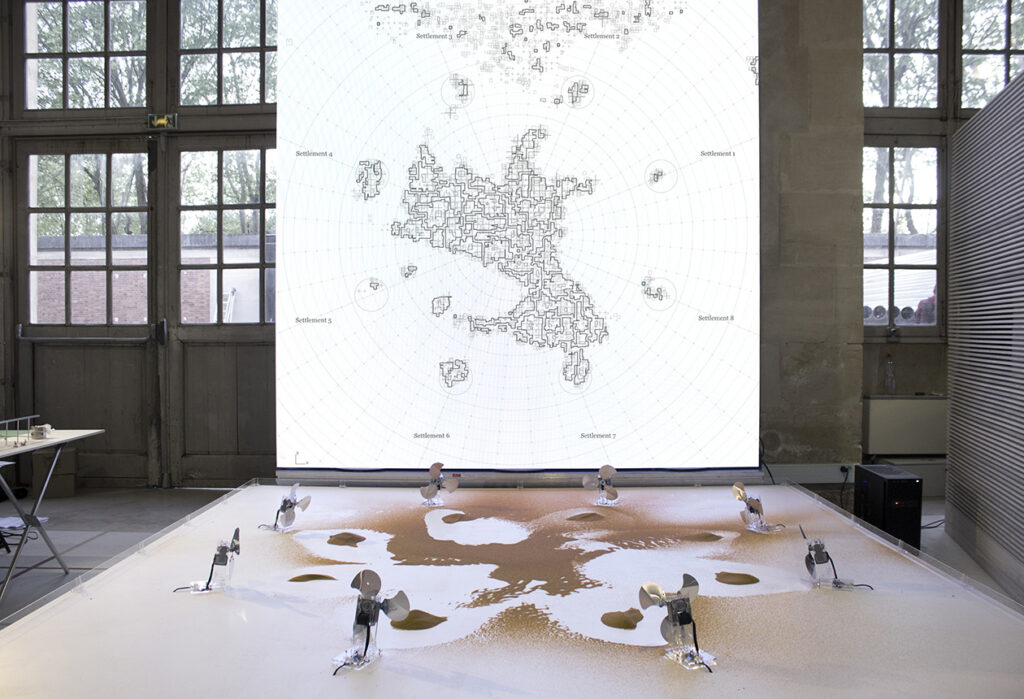


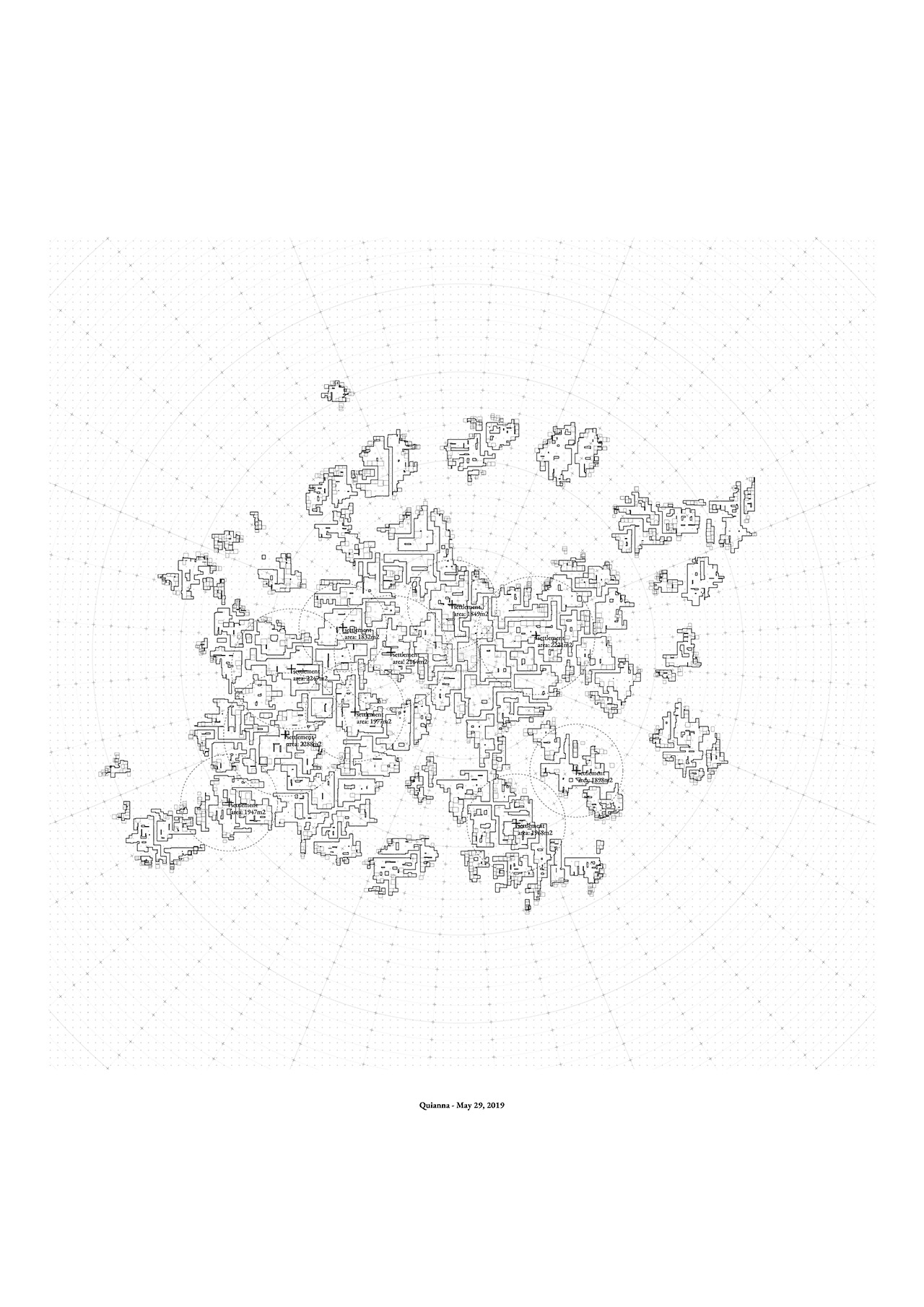
PERPETUAL UNKNOWNS
The slope of a mountain, the meanders of a river, the quality of a soil, a shelter from strong winds, the exposure to the sun … Geology, its forms and its impact on resources, has often been the main factor of the development of our settlements, our cities; the way we inhabit our world. But geology itself, in return, is affected by the way it is inhabited.
We live in a time when the scale of the impact of humankind on the environment has finally been understood. Scientists around the world have called for the recognition of a new geological age in which nature can no longer be seen as dissociated from man:
the two are linked in a unique ecosystem, touching each other in a reciprocal tandem.
As a two-fold fiction, the installation Programming the Perpetual Unknown addresses the reciprocal relationship between geology and the way we live in it:
an automated installation where sand formations mutate and a dynamic architectural drawing reacts – and finally affects it. The two entities: the changing geology on the horizontal table and the dynamic drawing projected on the vertical wall are translations of each other. When a sand dune is moved, the drawing reacts by re-organizing a settlement around it. Conversely, if a space is too densely inhabited on the drawing, it is the drawing which, in return, affects the geology by modifying the sand landscape on the plateau.
Today, geology has accelerated. Beyond geographical forms, we must consider other rapid factors that affect our way of inhabiting the territory. Climate change is one, but also contamination, advanced communications, real estate speculation, social relations … We understand today that what is now will be different tomorrow.
These new forces require us to reinvent our relationship to the milieu, and especially its temporality: the city of tomorrow will adapt even more, and faster, to the conditions that host it. But we must also consider its impact on this context, which is under constant change.
Programming the Perpetual Unknown, is only a game, with open interpretations, which stages an electronic environment and a dynamic drawing in which elements are set in motion in an automated performance. The movement is perpetual and the outcome is unknown, all governed by a protocol of actions in which the speed of revolution of a fan in a physical environment could be affected by the density of a built settlement drawn in a digital space …
The project is a collaboration between APPAREIL and the Institute for Advanced Architecture of Catalonia (IAAC). Both entities are located in the @22, Barcelona’s Technological and Innovation district, and ground their research on the potential of novel techniques in architecture and urbanism.
Project: Appareil & IAAC
Direction: Edouard Cabay
Curation: Emmanuelle Chiappone-Piriou
Team: Rodrigo Aguirre, Anthony Boguszewski, Peter Geelmuyden Magnus
Code: Angel Muñoz – WeAreCoded
Photography: Peter Geelmuyden Magnus
The work of this installation has been developed in Machinic Protocols, a research project in the Master in Advanced Architecture at IAAC in 2018.



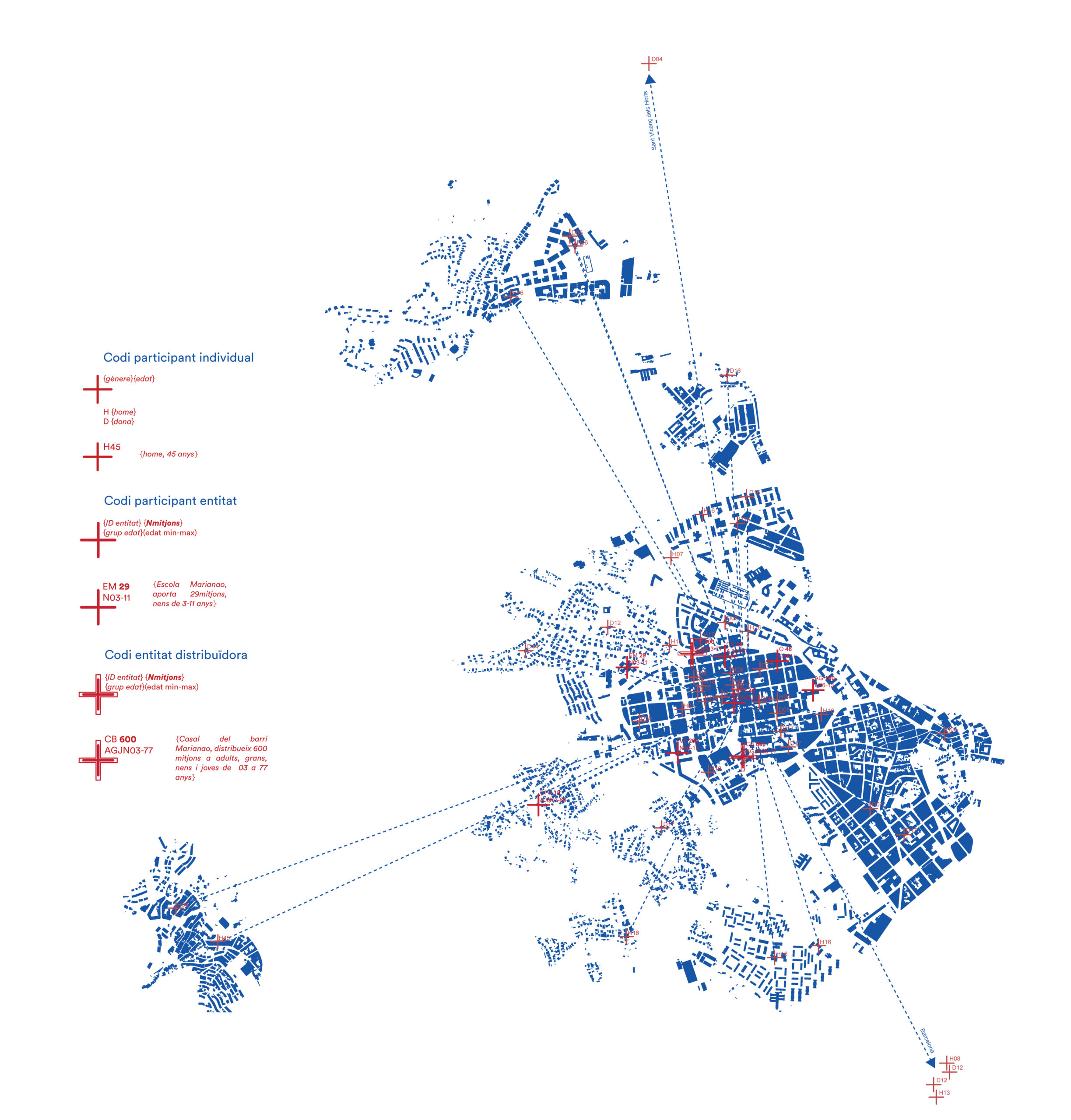
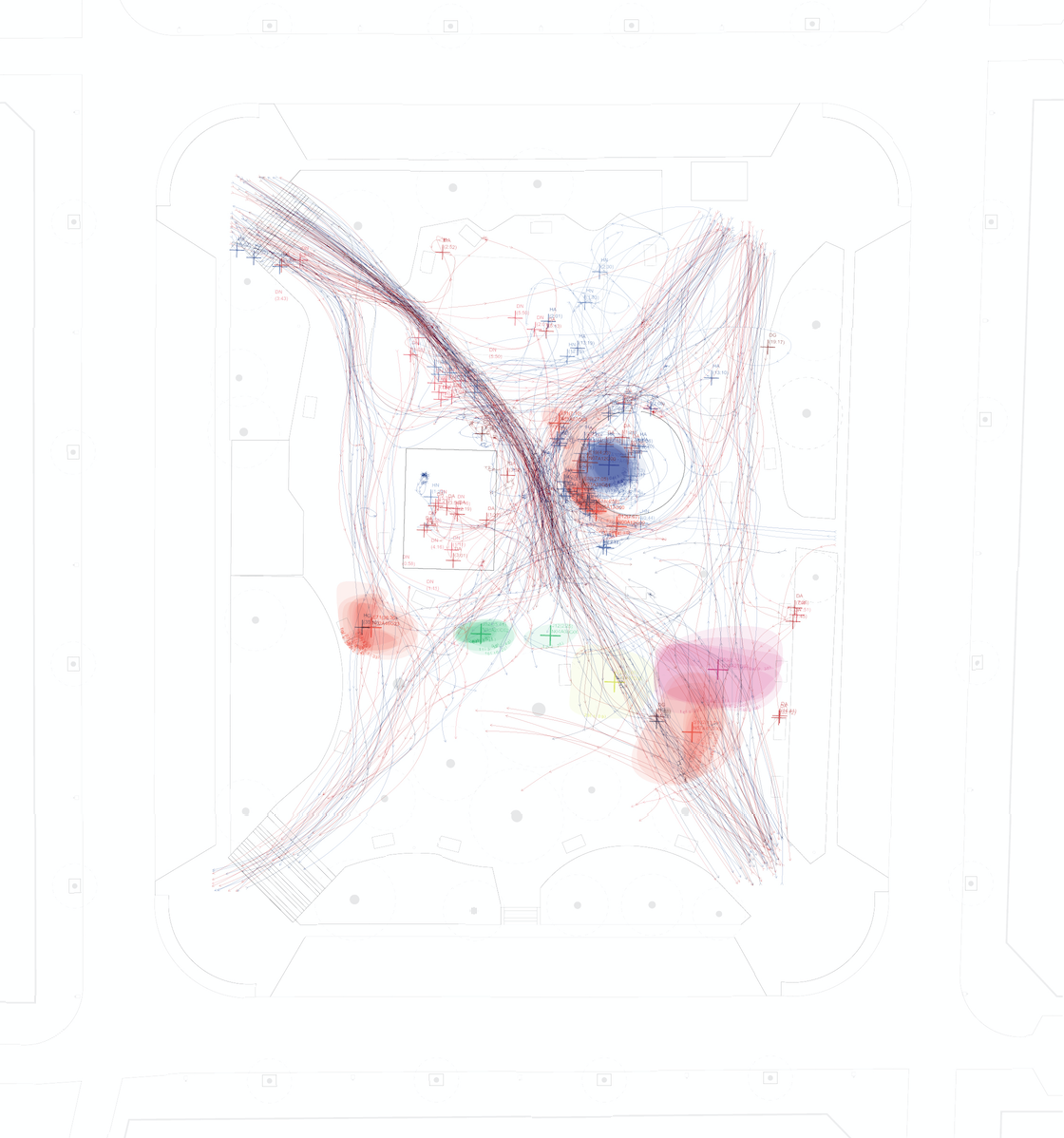
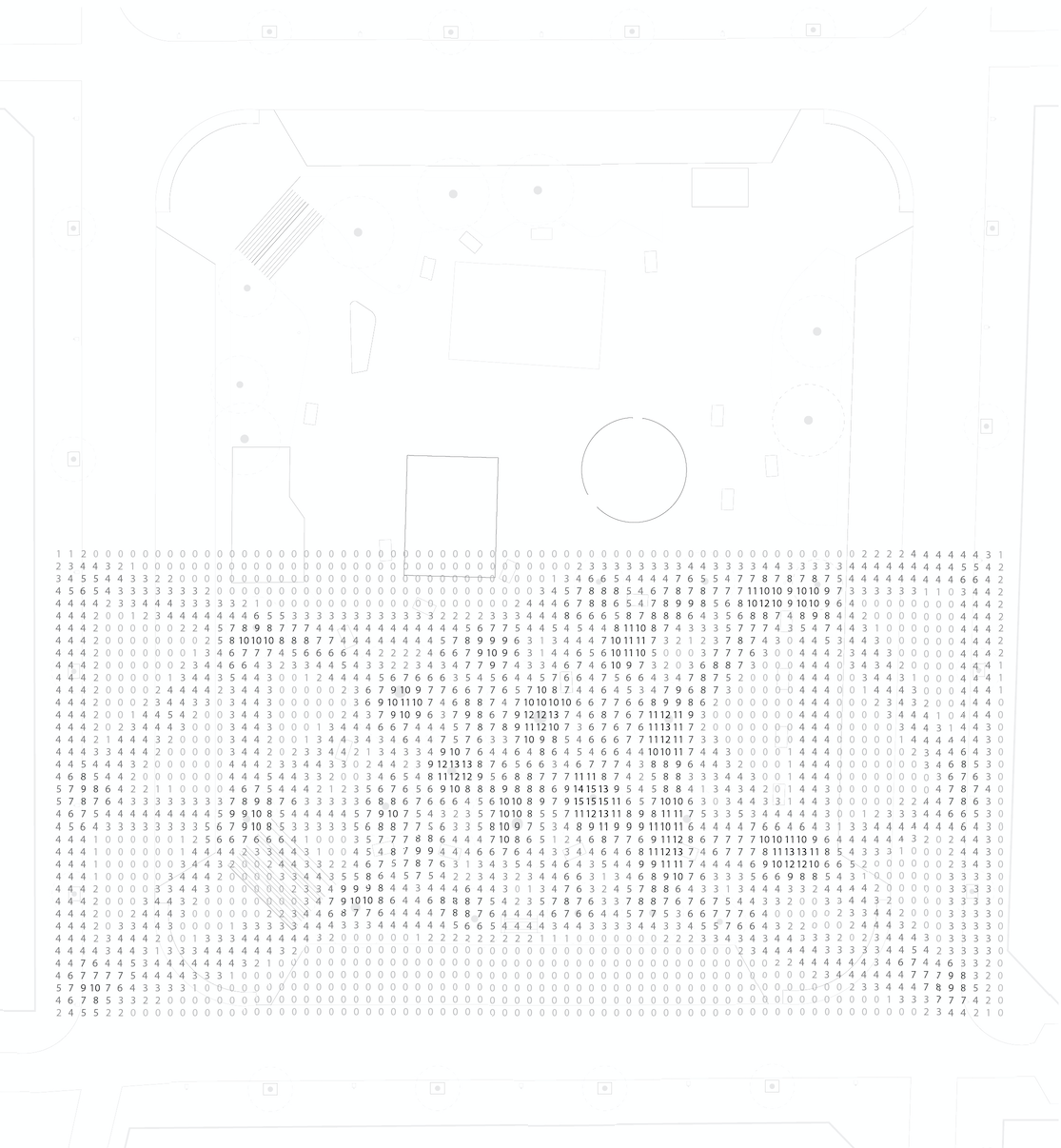

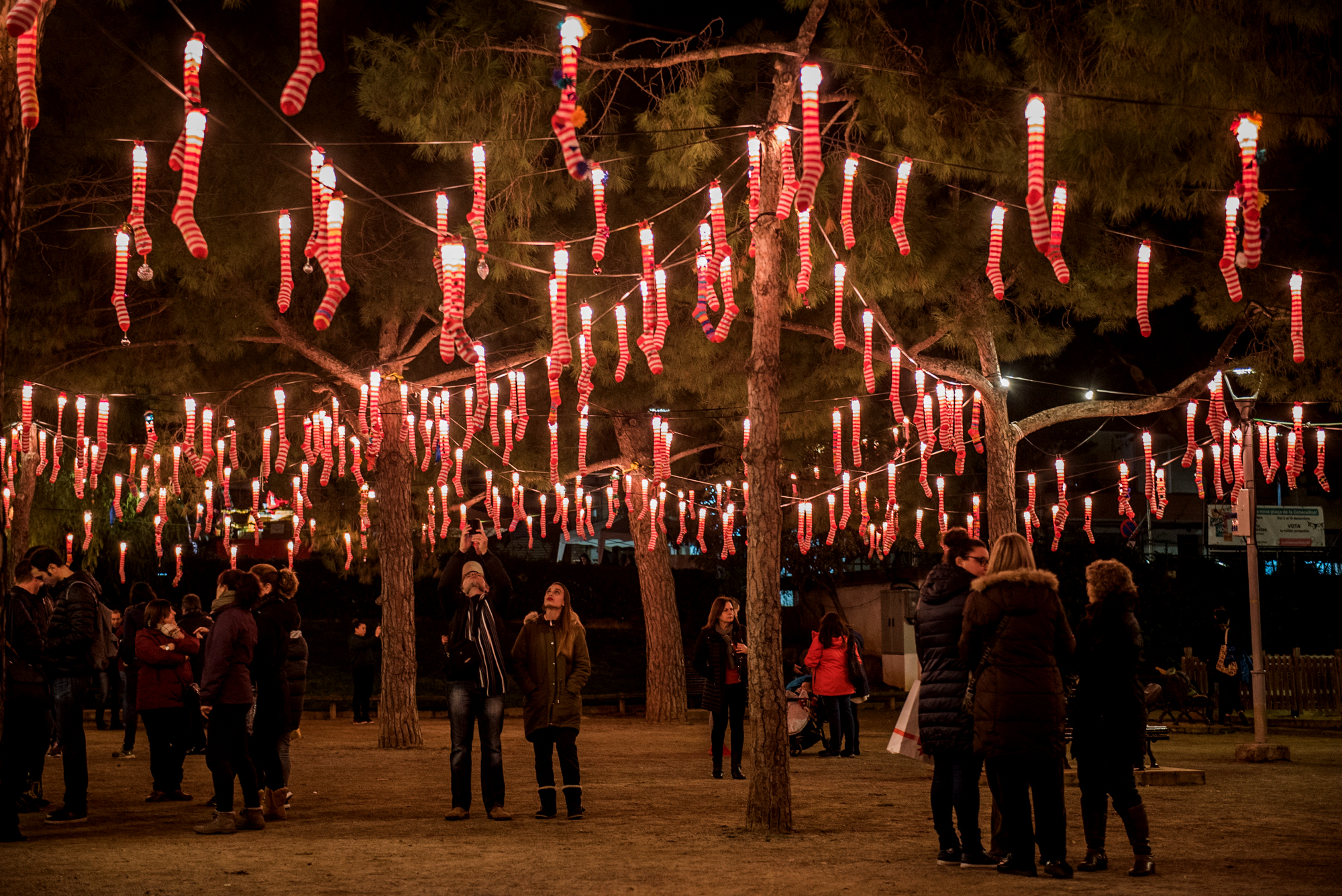


Civic Place Making
En Mitjons a la Plaça*
Co-created temporary intervention in Plaça de la Generalitat, Marianao, Sant Boi de Llobregat. 1000 children, 1000 wishes adn 1km of light bulbs.
Part of the research project:
Civic placemaking I: design, public space and social cohesion.
*On the Square in Socks
This is a collaborative action that is integrated within the framework of a research project commissioned by the local government of Sant Boi and “la Caixa” Banking Foundation. The project consists in studying the potential of Plaça de la Generalitat square to become the engine for urban regeneration of the Marianao neighbourhood, and in understanding the reasons why this square does not work. The main design strategy aims to propose site-specific actions with potential to reverse the current dynamics, applying the logics of ephemeral architecture practices.
One of the main conclusions of the study is that the neighbours have, in their greatest majority, a negative perception of this space, despite the good conditions of the square to become the central public space of the neighbourhood.
On the Square in Socks is a collaborative action that aims to promote a collective, celebrative and cathartic experience which helps to build a new positive collective imaginary of the place. An act of reappropriation of the public space by the neighbors themselves. The action comprises the Christmas decoration of the square through a network of light garlands made out of socks, each one of which personalized by a resident of the neighbourhood. Almost 1,000 children and adolescents and 24 entities among schools, associations and foundations of the neighbourhood were involved throughout the whole process of the development of the project.
Research team: Dr. Roger Paez, Manuela Valtchanova & Toni Montes, Rodrigo Aguirre
Partners: Fundació Bancària “la Caixa”, Ajuntament de Sant Boi de Llobregat, Equip Comunitari Marianao Té Cor, Fundació Marianao
